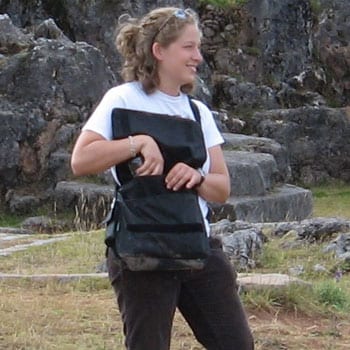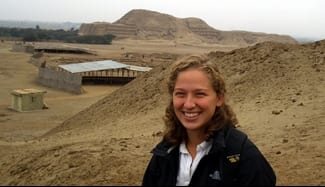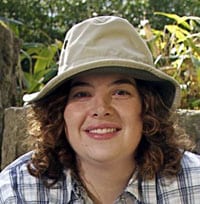A 16th century estate in Peru will offer insight into how expanding empires subjugate people and appropriate their resources to promote a cause. Kylie Quave, an SMU graduate student in archaeology, has received a prestigious Fulbright U.S. Student Fellowship to conduct archaeological fieldwork and research in southeastern Peru, the heart of the ancient Inca empire.
The 10-month fellowship begins in August 2009. During that time, Quave intends to excavate residences on the estate of 16th-century emperor Huayna Capac. She hopes to shed light on the Inca elites who lived there and supervised the estate’s daily operations, immigrant laborers and land, which had been appropriated by the nobility.
“The Incas transformed the rural landscape around their capital into immense sources of private wealth,” Quave says. “I hope to contribute to a global understanding of how empires use people and resources to promote their cause and how local communities respond to the imperial campaign.”
During her fellowship, Quave will collaborate with local archaeologists in the field and laboratory, along with local historians in regional and national archives.
With experience as an SMU teaching assistant and as a researcher and docent for the Dallas Museum of Art, she also plans to work with the local community to create educational programming for children and adults.
“We will bring together our diverse perspectives to understand how the Inca developed private investments in the rural heartland using a multiethnic labor force,” she says. “The community will be involved in the preservation of its past.”
Quave, a native of Brooksville, Florida, earned her Bachelor’s degree in art history in 2005 from Emory University. In SMU’s Dedman College, where Quave earned her Master’s degree in 2008, she has taken courses in archaeological method and theory, and previously has done fieldwork in Bolivia and Peru.
“Kylie’s dissertation will move beyond well-known Inca country palaces like Machu Picchu, developing valuable perspectives on how royal families developed and managed private resources that were key to the economic maintenance of the largest native civilization to develop in the Americas,” says Alan Covey, assistant professor of anthropology and Quave’s dissertation adviser. “Her success is the latest for SMU’s doctoral program in anthropology, which recruits talented students and prepares them to make a professional impact early in their careers.”
Graduate student Amanda Aland was awarded a Fulbright in 2008, also to conduct archaeological fieldwork and research in Peru.
Quave is one of 1,450 U.S. citizens selected to study abroad this year through the U.S. State Department’s Fulbright Student Program. More than 40 SMU students have been awarded the fellowship in the last 35 years. — Sarah Hanan
Related links:
Kylie Quave
SMU Department of Anthropology
Dedman College of Humanities and Sciences
Fulbright Program


